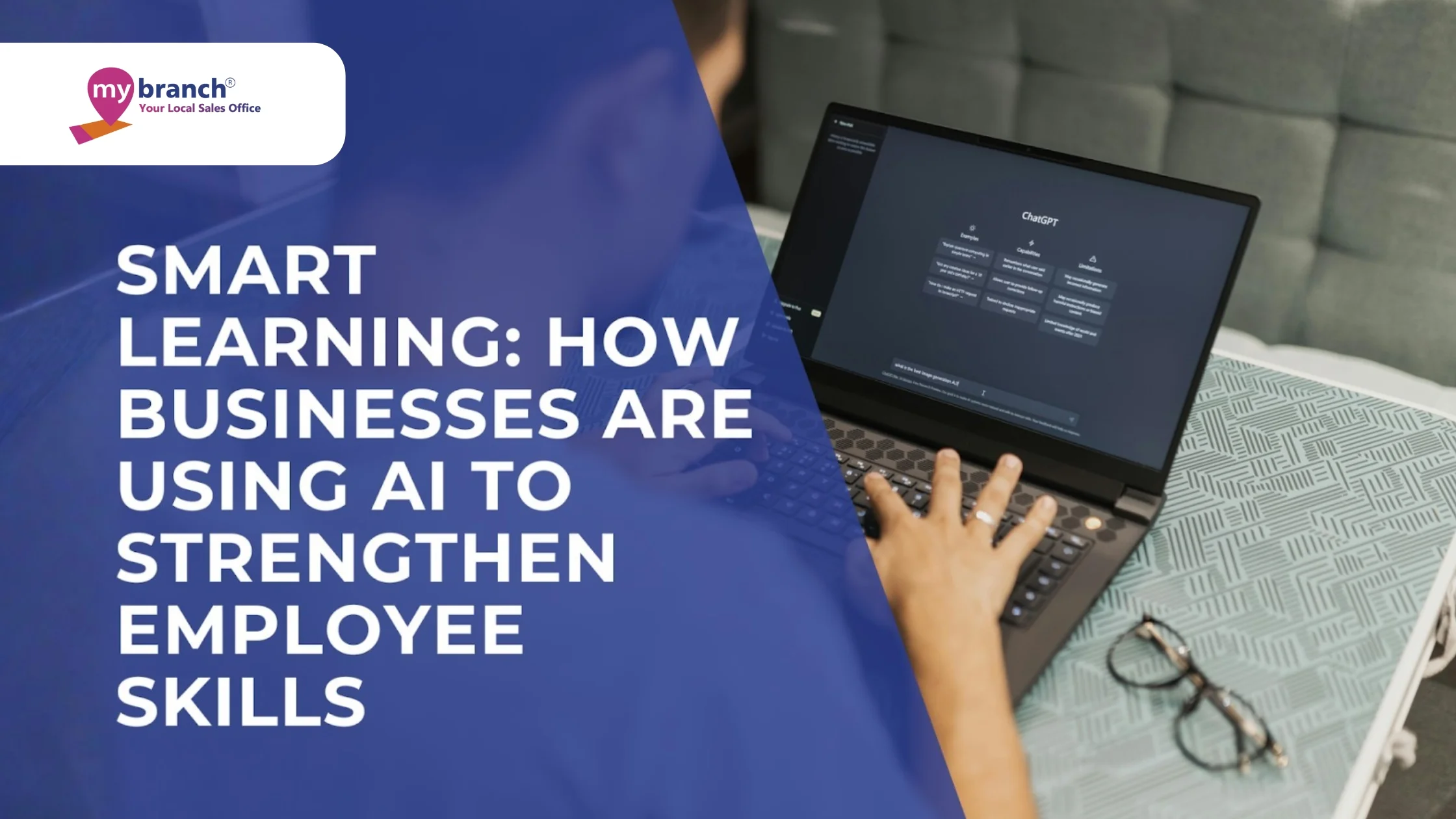
Introduction
Imagine your team recognising a skills gap, then — instead of lining up for a generic training session — they’re handed a learning path tailored to their role, pace and business goals. That’s no longer futuristic: it’s happening now, thanks to AI. At MyBranch we’re seeing more companies shift from “one-size-fits-all” training to smart-learning journeys powered by artificial intelligence — and this shift is reshaping how organisations build capability and stay competitive.
We’ll walk you through what this means, how it’s applied, a real scenario, and how you as a founder or business leader can think about it.
1. What Smart Learning Means in a Business Context
Smart learning refers to using AI tools and data-driven insights to design learning experiences that fit individual needs, roles and business outcomes. Rather than loading every employee into the same programme, smart learning:
- identifies skill gaps using analytics (performance data + market trends)
- delivers personalised content, micro-modules and feedback loops
- enables just-in-time learning — what the person needs when they need it, not six months later.
- supports continuous development rather than episodic “training days”.
In short, it’s learning that adapts to the learner — and aligns with business goals. For a company using coworking or flexible workspace models (like those MyBranch helps support), smart learning ensures the team skills keep up with evolving business models.
2. Why Businesses Are Embracing AI for Employee Skill Development
From our vantage at MyBranch we’ve noticed several drivers pushing this trend:
- Rapid change in job roles: Technology, remote work and hybrid models are altering what employees need to know. For example, in India some major firms have already mobilised upskilling programmes for generative AI across hundreds of thousands of staff.
- Need for efficiency: Traditional training can be time-consuming, generic and disconnected from actual workflows. AI enables smarter, more relevant learning, reducing waste.
- Talent retention & engagement: When employees see investment in their growth, and the training feels meaningful, engagement improves. Smart learning can provide that.
- Scalability: Businesses with distributed teams (multiple branches, flexible offices) benefit from automated, AI-driven learning systems that maintain consistency but adapt locally.
So if your business is leasing a private office or managed office in a coworking environment and scaling teams, smart learning means you don’t have to lag behind as you grow.
3. Scenario: How a Growing Team used Smart Learning
Let’s picture a mid-sized firm in the services sector expanding into a new city office. They engaged MyBranch to provide a managed office space, and simultaneously faced the challenge of aligning new hires, remote team members and evolving roles. They opted for an AI-driven learning programme that:
- Assessed each employee’s existing skills and role requirements.
- Created micro-learning modules: short bits employees could complete between meetings.
- Used on-demand chatbots/virtual assistants for queries during workflows (so the learning could happen while work happened).
- Delivered immediate feedback and adjusted suggestions based on performance.
Within a few months the team reported better alignment in client-deliverables, fewer “we missed that skill” issues, and the business leader felt more confident about scaling to multiple branches. That’s smart learning working hand-in-glove with workspace growth.
4. Key Considerations & Best Practices for Business Leaders
When you consider using AI-driven learning in your organisation, here are some practical pointers:
Define the “why” first
- What skills matter for your business now (and next year)? Data-analysis, client-engagement, remote collaboration?
- How does that map to roles you have or will hire for?
Select the right platform / partner
- Look for solutions that offer analytics, personalised pathways, real-time feedback.
- Ensure it integrates with your workflow (this is especially relevant if your teams are spread across locations, remote/hybrid, or using coworking/managed offices).
Ensure learner-friendly design
- Micro-modules beat long lectures. Short, relevant, on-demand.
- Real-world application: ensure learning isn’t isolated but tied to job tasks.
Link to workspace strategy
- If you’re using managed office space or shared office space, the learning ecosystem should support mobility, hybrid work, flexible schedules.
- For example, enabling learning while teams work across branches or coworking hubs ensures consistency.
Measure and iterate
- Track participation, skill-improvement, business impact (e.g., fewer errors, higher productivity).
- Use feedback loops to refine content, delivery, and timing.
Mind the human side
- AI is an enabler, not a replacement. Transparency, employee buy-in, and ensuring the human touch remains are vital.
- Ensure employees see learning as an opportunity, not just compliance.
5. The Future of Learning + Workspaces
As flexible work and coworking models grow, we expect smart learning and workspace strategy to become tightly intertwined:
- Companies will expect office space solutions (like those by MyBranch) to support not only infrastructure but also enable talent development.
- Remote or distributed teams will rely on AI-powered platforms to stay skills-ready across locations.
- Learning will shift from “course after onboarding” to “continuous micro-learning throughout employment”.
- Workspaces will incorporate on-site or in-house learning hubs, quiet zones for micro-modules, meeting rooms for peer learning, etc.
In this evolving landscape, firms which synchronise workspace strategy and learning strategy will gain a competitive edge — it’s not just where you work, but how you learn and evolve while you work.
Wrap-Up
Smart learning powered by AI isn’t about replacing human development — it’s about amplifying it. At MyBranch we believe your workspace strategy and your talent-development strategy should move in tandem. When you choose your next private office, serviced office, or coworking space, ask: “Is our team ready for what’s next?” Because the workspace of the future is where work and learning meet.
Takeaway: Investing in smart learning means investing in your team’s future and your business’s readiness. If you’d like to explore how MyBranch supports not just flexible workspace but also the culture of growth that comes with it, we’re here to help.
